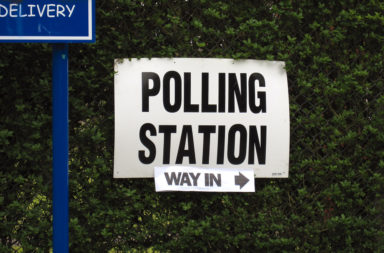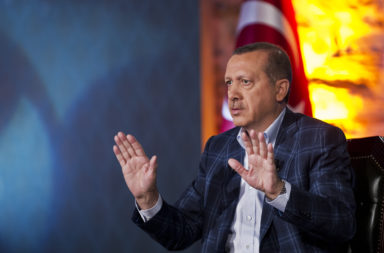This country was heaven for asylum seekers for decades.
Now Sweden makes an U-turn and will send half of the asylum-seekers back home.
Sweden will now reject a minimum of 60,000 up to 80,000 people who applied for asylum in 2015.
Approximately 60 percent of the refugees in Europe have no political, but only economical reasons and therefore no right for asylum.
The country will arrange charter flights to expel refused asylum seekers to their countries of origin.
Sweden is no longer extending the warm welcome it offered last year.
In 2015 163.000 people applied for asylum in Sweden, by far the biggest influx in the EU as a proportion of the population.
Recent projections by the Swedish Migration Agency indicate that between 70.000 and 140.000 more asylum seekers could come to Sweden during 2016. Some claim it could be far more.
In the midst of a European squabble about border protection and burden sharing, Sweden has long stood out as a generous safe haven for asylum seekers. The small country has welcomed more refugees per capita than any other Western nation. But no more.
Sweden’s two party coalition announced on November 25, 2015 that it was time for a break. The deputy prime minister, Åsa Romson (The Greens) broke into tears as Prime Minister Stefan Löfven (The Social Democrats) stated that Sweden’s asylum regime would revert to the EU minimum.
In short, by reducing its generosity, the hope is to deter new arrivals. Of the ones who do still arrive, the government is hoping to reject as many as possible.
This ambition sparked global headlines in January 2016 when Minister for Home Affairs Anders Ygeman (The Social Democrats), announced that the government was aiming to reject up to 80.000 applications. In a country with a global reputation for the recognition of human rights, outrage has abounded.
The same happened in another Scandinavian country. Finland’s interior minister said Helsinki also intended to expel about 20,000 of the 32,000 asylum seekers it received in 2015.
Dissenting views among the parties
Most interestingly, the decision was not shared by both government parties. With most of the proposals coming from the Social Democrats, the Greens have called the new policy a ‘terrible decision’ yet decided against quitting government over the issue.
Within the same political camp, the leader of the Left party Jonas Sjöstedt commented that Sweden had been “a light in the darkness this autumn” but now “the light was extinguished”.
Across the line, the Liberal People’s Party has been vocal about their criticisms against closing the borders.
However, Minister Johansson denied that this turn in policy direction was harsh or inhumane.
“What is the alternative, we have to uphold the legal principles”, he stated.
He also claimed that whilst Sweden had traditionally interpreted the standards for asylum far more liberally than most of its neighbours, it was time to provide for the already existing Swedish citizens.
What is happening to this once generous country in the North, and why now?
Tracking the key causes
Firstly, as always, it’s about money.
The financial cost of receiving the refugees is daunting. Sweden expects to spend about 7 percent of its $100 billion budget next year on processing migrants. That is double the 2015 budget. It is not yet clear where the additional funds will come from. Needless to say, it is a question that does not sit well with many taxpayers.
Another question that usually comes up is what will they do? An argument commonly made is that immigrants can be a remedy for Sweden’s aging-population problem. Yet, statistics compiled by the Swedish Migration Agency show that half the new arrivals do not have a high-school degree, and one-third have not progressed beyond ninth grade. There are concerns for the prospects of such groups entering the labour market. So far, the record shows that refugees take much longer to join the workforce than native Swedes, and they remain unemployed in far larger numbers. In fact, according to recent research by the Swedish Employment Agency, for the first time ever, more people born outside of Sweden would be unemployed than people born in the country.
Secondly, it’s about culture.
It’s tricky territory to talk about culture, because it’s a fluid concept. But it seems reasonable to suggest that people who come from different countries have important cultural differences, to some degree. How will the influx of all these very different cultures change Sweden? This is a question that the Swedes have struggled even just to ask.
Diana Janse, a former diplomat claims there is a climate in Sweden of political correctness. “We have this expression in Swedish… ‘opinion corridor’ — the views you can’t move outside of.” And there are several sensitive topics which often end up outside of the corridor. A few which usually cause discomfort are the topics of arranged marriages, burqas and honour killings.
Thirdly, it’s all about politics.
Many Swedes have long refused to accept that the creeping nationalism that has grown over Europe also affects good-natured Swedes.
Yet it is remarkable that the Sweden Democrats, the far-right anti-immigrant party, have grown into the third largest party in only six years. When they entered the parliament in 2010 with 5.7 per cent of the vote, most observers assumed it would not last. Yet, today the party holds over 18 per cent support according to the most recent polls. To put that into perspective, the Social Democrats have 23 per cent.
Feeding its consistently growing support, the party has pushed a systematic agenda on the risks of immigration including rising crime rates and clashing social values. For a long time, the other parties responded by refusing any form of cooperation with the Sweden Democrats. However, this seems only to have increased their sympathies with those voters who claim that Swedish politicians are too afraid to have a frank debate about immigration. A recent poll in November 2015 found that 41 percent of Swedes thought the country was taking too many refugees.
Isolating the anti-immigrant rhetoric of the Sweden Democrats has not worked. Instead, it seems the Social Democrats are now going at it alone in seeking to reclaim control over the refugee crisis. And perhaps avoid losing any more voters. Is this the right way to go?
That depends on who you ask. Tackling the refugee crisis was never going to be easy.
The factors listed above are pertinent for understanding why the current government is closing the door on refugees. Clearly, this new perspective clashes with those of a more idealistic view of Sweden, based upon principles of egalitarianism. Yet for many, the new policies are a long awaited change towards more realistic policy measures. The risk however is that the government becomes so preoccupied with competing with the Sweden Democrats for voters, that it takes further steps down this path of minimal protection. Ironically, this would only benefit the far-right agenda.




